Thorax
Bones
The thoracic spine consists of twelve vertebrae and labelled as T1-T12. These twelve vertebrae are anchoring the rib cage posteriorly. The thoracic vertebrae have special features which distinguish them from other vertebrae. The heart shaped vertebral bodies. The presence of demi facets on the sides of each vertebral body, these articulate with the heads of the ribs. Costal facets are on the transverse process, these articulate with the tubercles of the ribs. They are present on T1-T10 only. The spinous processes are long/slender and are slanted inferiorly. The thoracic vertebrae supports the weight of head, neck, upper limbs and chest. It articulate with the ribs to allow changes in volume of thoracic cage. MORE DETAILS ABOUT THE THORACIC CAGE GO CHECK OUT THE THORACIC CAGE SECTION.
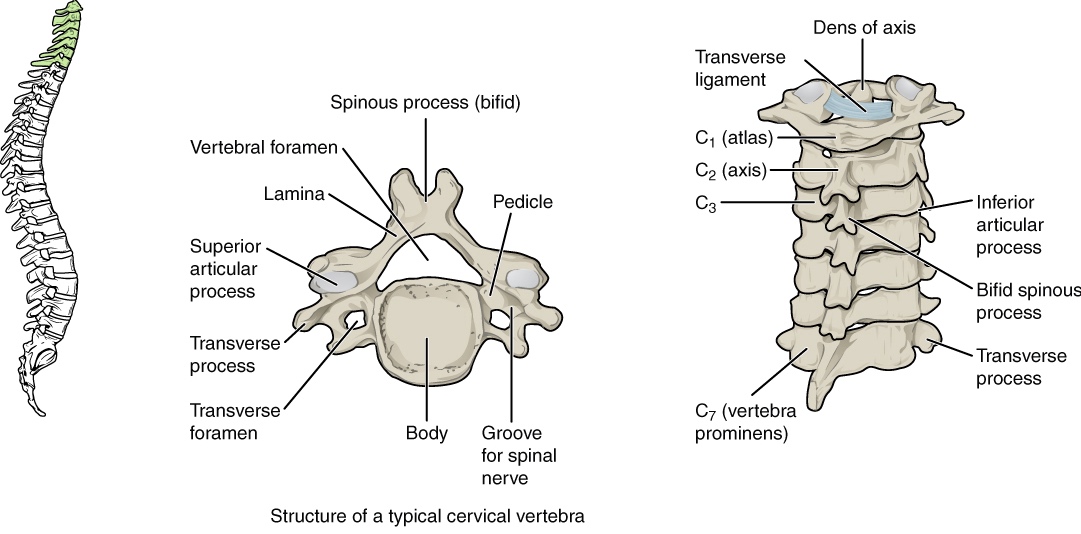
The thoracic cage consists of 12 different sets of ribs, 3 different bones that form the sternum, and the costal cartilage between the two; connected together they form a cage. These three sections (ribs, sternum, cartilage) all protect vital organs such as the lungs and the heart.
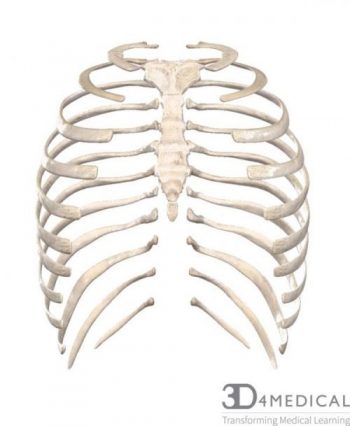
Sternum:
The sternum is a structure that anchors the anterior aspect of the thoracic cage. There are three major aspects to the sternum; the manubrium, the body, and the xyphoid process.
The manubrium is the wider, superior portion of the sternum. On the top portion of the manubrium, there is a depression that we call the jugular notch, which can be felt between the two clavicles. On each side of the jugular notch there is a bony block that separates the clavicle notch on each side. The clavicular notch is the attachment point for the clavicle, creating the sternoclavicular joint (SC Joint).
The central, elongated portion of the sternum is called the body. The manubrium and the body join together at the sternal angle, due to the junction being at a slight bend as opposed to flat. The body connects to ribs 2 through 7 at the site of the costal notches.
The inferior tip of the sternum is the xiphoid process. This structure is cartilaginous early in life, but gradually becomes ossified during middle age.
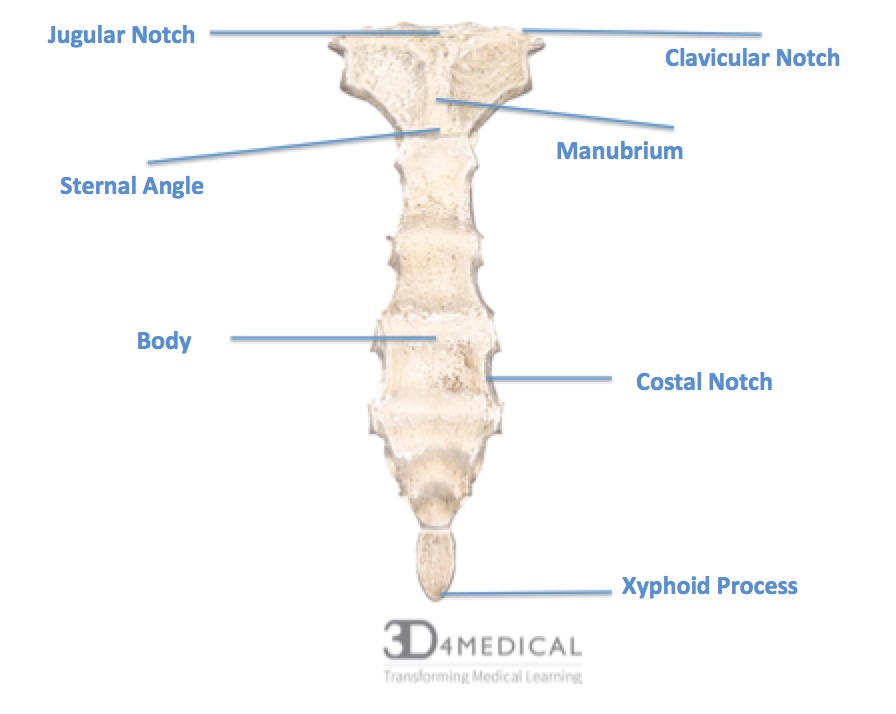
Figure A.) Sternum
Each rib is a curved flattened bone that contributes to the wall of the thorax. The ribs articulate posteriorly with the T1-T12 vertebrae, and are numbered .1-12 in accordance with the thoracic vertebrae. Ribs 1-10 attach via their costal cartilages to the sternum. With the first rib is hidden behind the clavicle, the second rib is the highest identified through palpations. This means that the second rib and the sternal angle are important landmarks for the identification and counting of lower ribs.
Typical ribs consist of 3 parts; a head, a body, and a neck:
- The head has two articular facets (separated by a wedge of bone); one connects to the corresponding vertebrae, the other to the vertebrae above.
- The neck simply attaches the body to the head, and the only big landmark is the rough tubercle that attaches to the costal facet.
- The body, or the shaft, is flat and curved. On the inner part of the body, there is a grove for the neurovascular supply of the thorax (protecting them from external damage).
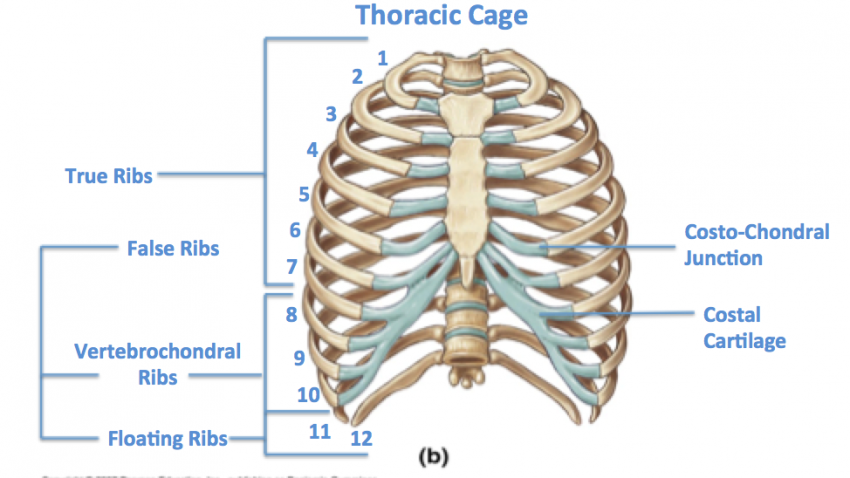
Figure B.) Thoracic Cage
There is a small bump on the posterior surface of the rib is the tubercle of the rib, which articulates with the facet located on the transverse process of the same numbered vertebrae. Just lateral to the tubercle is the angle of the rib, the point where the rib has the greatest degree of curvature. In anatomical position, the angles align with the medial border of the scapula. A shallow costal groove is found on the inferior margin of each rib, where blood vessels and nerves for the intercostal muscles are protected.
Ribs do not extend all the way to the sternum, as costal cartilage bridges the gap between sternal end of the rib and the costal notches. The costal cartilage is made up of hyaline cartilage, which can extend several inches. The ribs then are classified into three groups based on their relationship to the sternum.
- True Ribs (Ribs 1-7) each have attachments directly to the sternum through costal cartilage.
*Underneath Rib 1 is the scalene tubercle that project along the medial border between two grooves that travel anteriorly for the subclavian vein and posteriorly for the subclavian artery.
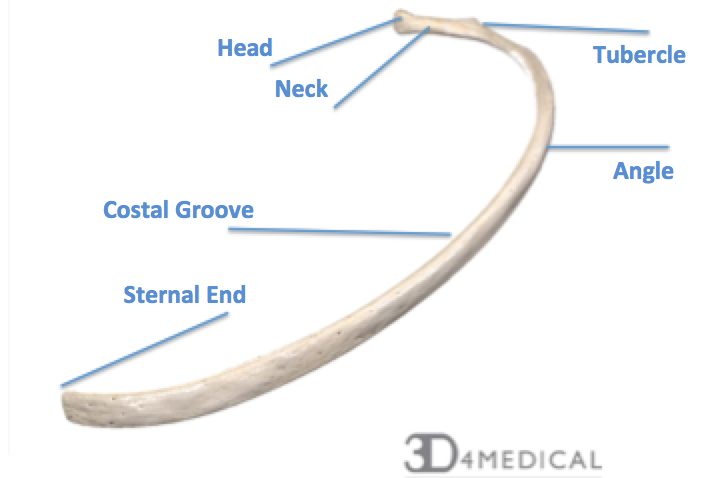
Figure C.) True Rib
- The first three false ribs (Ribs 8-10) are Vertebrochondular ribs. This means they do not directly attach to the sternum, as the costal cartilage attaches directly to the rib above. This means that the cartilage of rib 10 would attach to the cartilage of rib 9, and that the cartilage of rib 8 would attach to the cartilage of rib 7.
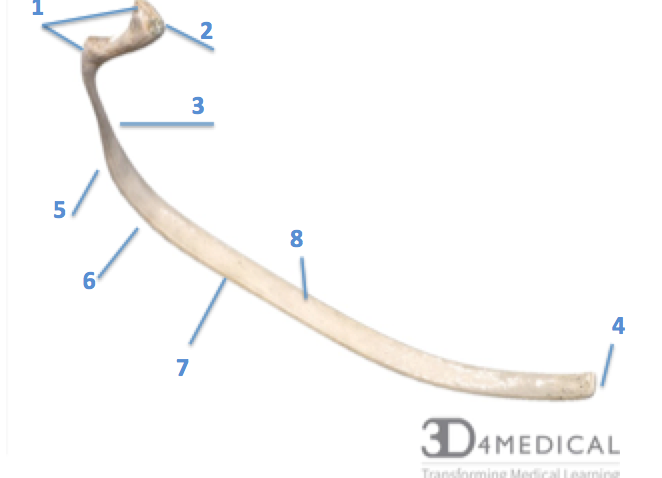
Figure D.) False Rib ( 1.) Articulating Surfaces, 2.)Head, 3.)Neck, 4.)Sternal End, 5.) Tubercle, 6.) Angle, 7.) Costal Groove, 8.)Body )
Floating Ribs (Ribs 11 & 12), or vertebral ribs, are the final two false ribs that do not attach to the sternum at all. Their costal cartilages terminate within the musculature of the lateral abdominal wall.
These muscles have attachment sites on the ribs:
Serratus Anterior: Origin: Ribs 1-8
External Oblique: Origin: Ribs 5-12
Iliocostalis: Origin: Ribs 3-12
Rectus Abdominus: Insertion: Ribs 5-7
Latisimus Dorsi: Origin: Ribs 9-12
Pectoralis Major: Origin: Ribs 1-6
Pectoralis Minor: Origin: Ribs 3-5
Diaphragm: Ribs 6-12
Exteral intercostals; Origin is Inferior border of the ribs, and Insertion is the Superior border of the ribs)
Scalenes: Anterior (Insertion: Rib 1), Middle (Insertion: Rib 1 dorsal to Anterior), and Posterior (Insertion: Rib 2)

